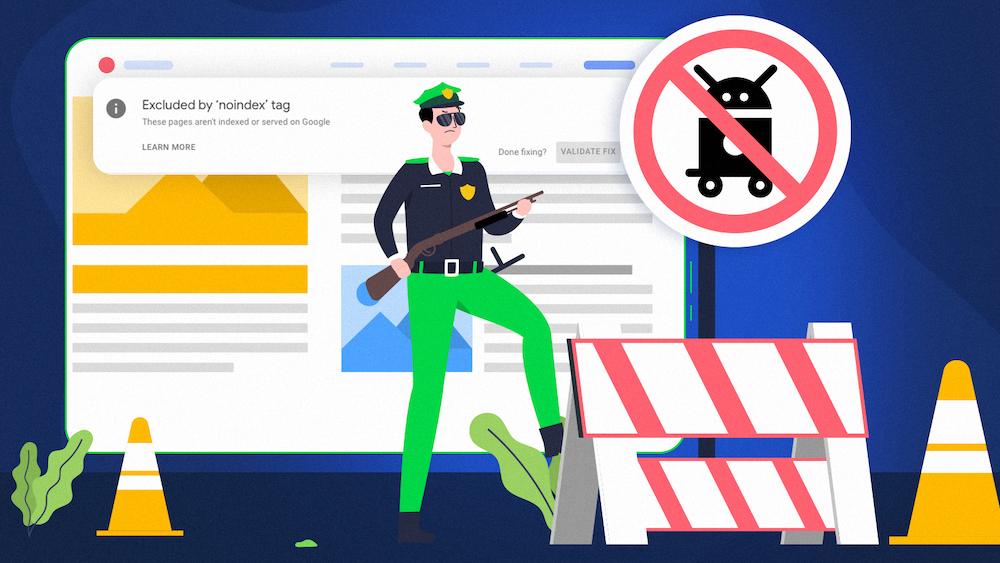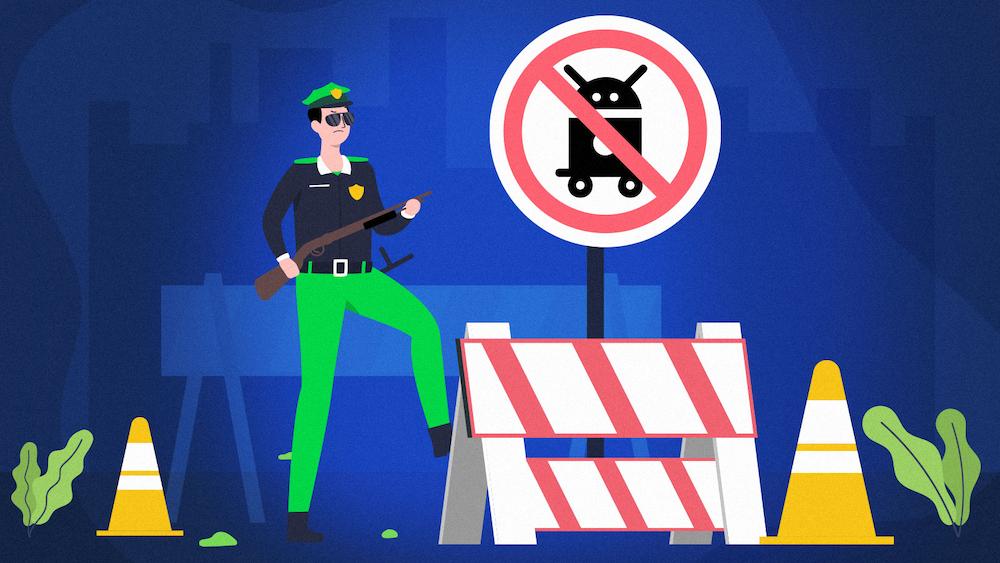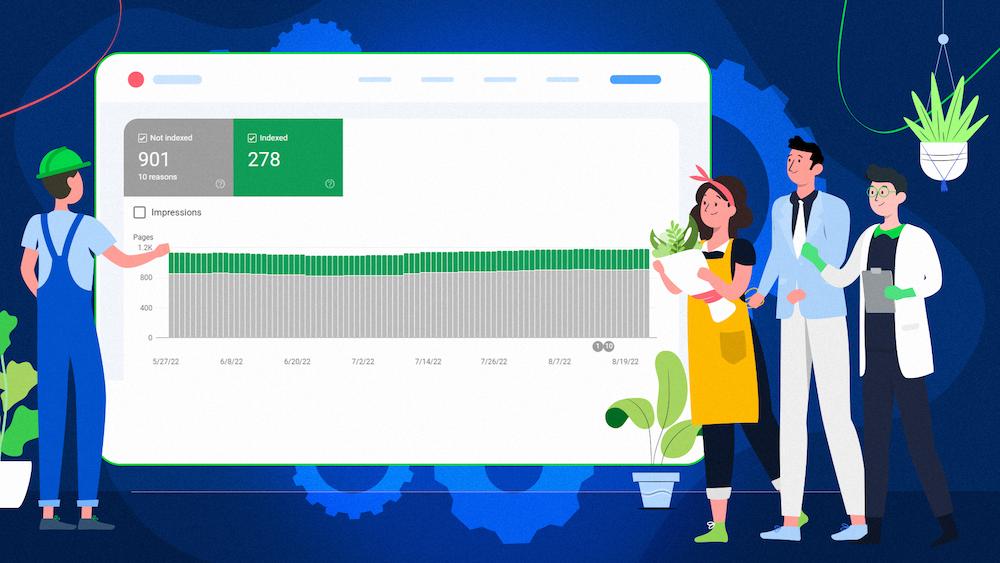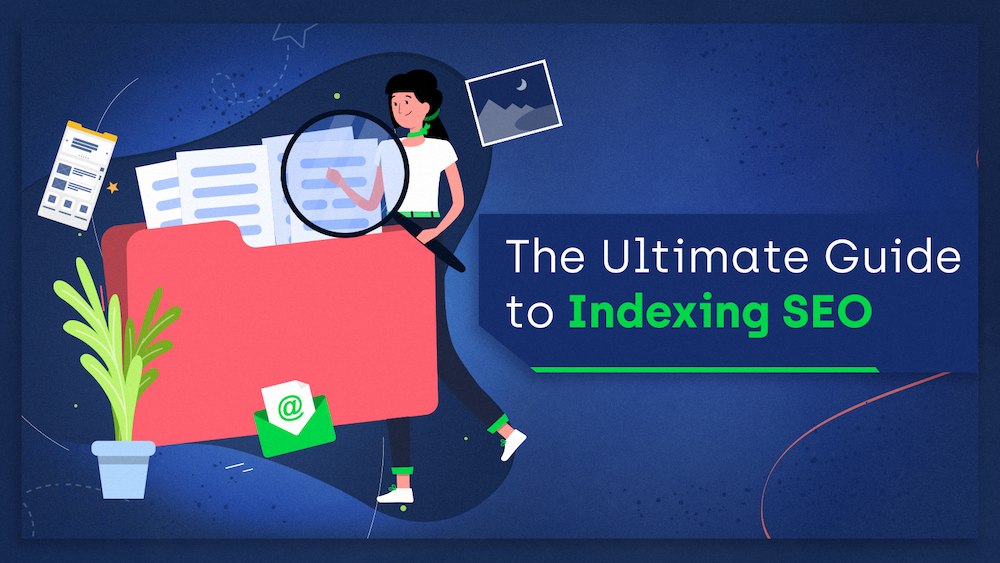When you see ‘Excluded by noindex tag’ in Google Search Console, it means Google found a ‘noindex meta tag’ on a URL, thus obeying the site owner’s instruction to prevent indexing, as Google documentation explains. This is a common practice for managing what parts of a website are searchable, The noindex meta tag is instrumental in controlling page indexing. However, issues arise when pages are accidentally tagged with noindex, possibly during website migrations or through misconfigured settings, leading to unintended search visibility losses. If the exclusion wasn’t intentional, the resolution involves removing the noindex tag from valuable pages meant for indexing. This process requires careful review of all pages marked as excluded to avoid indexing content meant to stay hidden. Depending on the specific scenario, fix the solution to this problem may involve:Summary in a nutshell
What is “Excluded by noindex tag”?
Why it occurs?
Initial Solution/Recommendation
How to fix “excluded by noidex tag”?
Causes for Google Search Console status “Excluded by noindex tag”
Using the noindex meta tag prevents Google and other search engines from indexing a given web page. And although the outcome of this action is the same ‒ your page won’t be indexed, your intentions may differ.
Let me walk you through the most common reasons for the “Excluded by noindex tag” status:
Controlling indexing with the noindex tag
You don’t need to worry about the “Excluded by noindex tag” status if you consciously blocked a page from indexing.
Remember that not all of your pages should be indexed. For example, you should control the indexing of your low-quality or duplicate content. It’s crucial to save Google’s resources for indexing your valuable pages.
If this is the case for you, congrats! You deeply care about your indexing SEO strategy, and you can ignore the “Excluded by noindex tag” issue.
Using the noindex meta tag by mistake
Blocking your essential pages with the noindex tag unintentionally sounds like the worst SEO nightmare.
It’s a sign of chaos on your website, and that chaos can cost you search visibility.
It may also mean that you didn’t figure out your indexing strategy, or your priorities for indexing content have changed.
Another example is when you forget about the noindex tag during a website migration.
A recommended part of website migration is creating a staging version of your website to test all the changes you want to implement with the move. Having your staging environment, you need to block bots’ access to it with a password or the noindex tag.
However, you may overlook removing the noindex tag when you move your website from the staging environment to production.
Reach out to us for website migration services to avoid potential mistakes and maximize your search potential.Need help with your website migration?
Another common mistake is having a page marked noindex and adding it to your sitemap.
Submitting a URL to your sitemap and using the noindex tag contradict each other.
Why? Because your XML sitemaps should contain only indexable URLs that you want bots to visit and index.
Before the 2022 Page indexing (Index Coverage) report update, this issue was even known as a separate Google Search Console status ‒ Submitted URL marked noindex.
In this case, Google thinks you want it to index your page because you submitted it to your sitemap file. However, it won’t happen as you’re teasing Google using the noindex tag and limiting its actions.
From your perspective, the problem with a submitted URL marked noindex may have two different facets, as you:
- Marked a URL with the noindex tag, but you also added it to your sitemap because you wanted Google to index it, or
- Added a URL marked noindex to your sitemap even though you didn’t want Google to index it.
How to fix “Excluded by noindex tag”
If you want to fix “Excluded by noindex tag”, you need to remove the noindex tag from your valuable pages that you want to get indexed.
Remember to go through the list of all your excluded pages to ensure that you’re not touching URLs meant to be noindexed. To do so, navigate to the “Excluded by noindex tag” issue and select the “All known pages” option in the upper left corner menu.
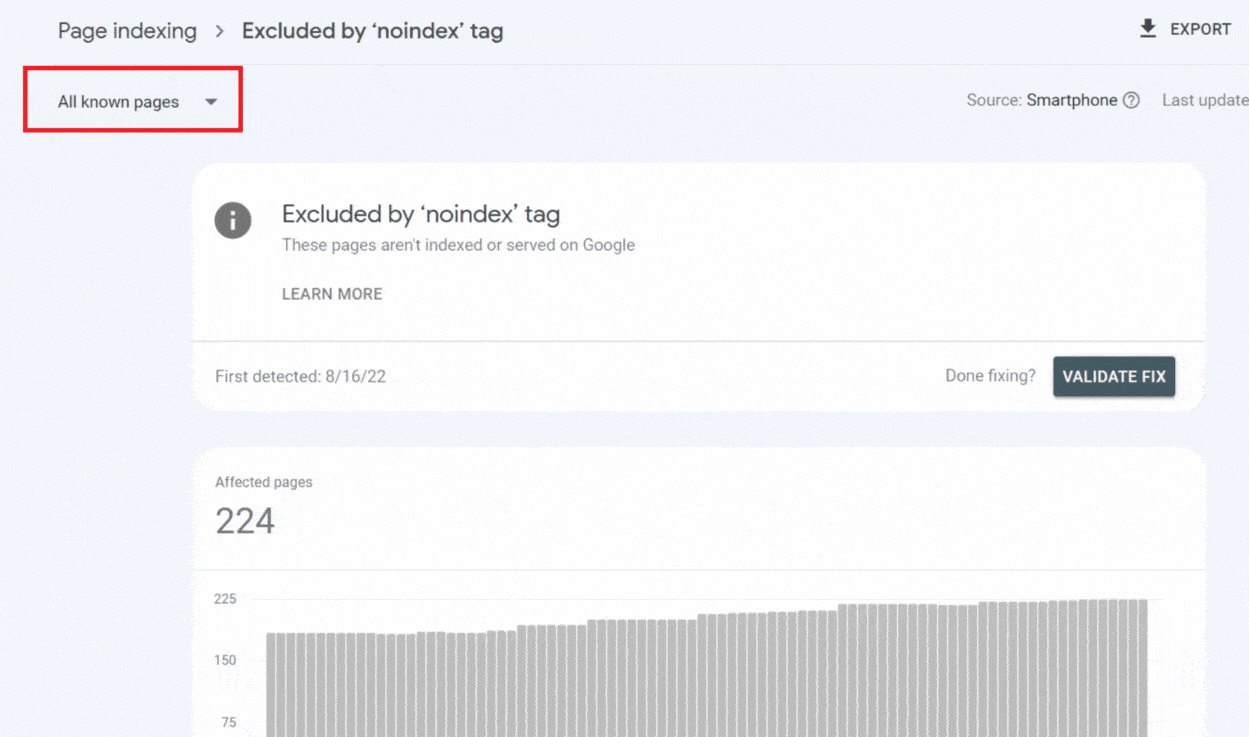
Also, always follow the best practices of using the noindex tag on your website.
After you make changes to your page, you can request indexing of the URL using the URL Inspection Tool in Google Search Console. It signals Google to crawl the URL with priority.
When Google revisits your pages and sees the noindex tag removed, it will schedule the indexing.
If your website doesn’t struggle with other issues, the URL status in the Page indexing (Index Coverage) report will change to “Indexed.”
When you submitted a URL marked noindex to your sitemap, addressing this issue may go beyond only removing the noindex tag.
Note that in this case, Google gets mixed signals from you so you need to ensure you won’t make it guess how to approach your pages.
Firstly, browse the list of all URLs submitted to your sitemap but also marked noindex. Select the “All submitted pages” option in the upper left corner menu to filter out only those URLs that you added to your sitemap.
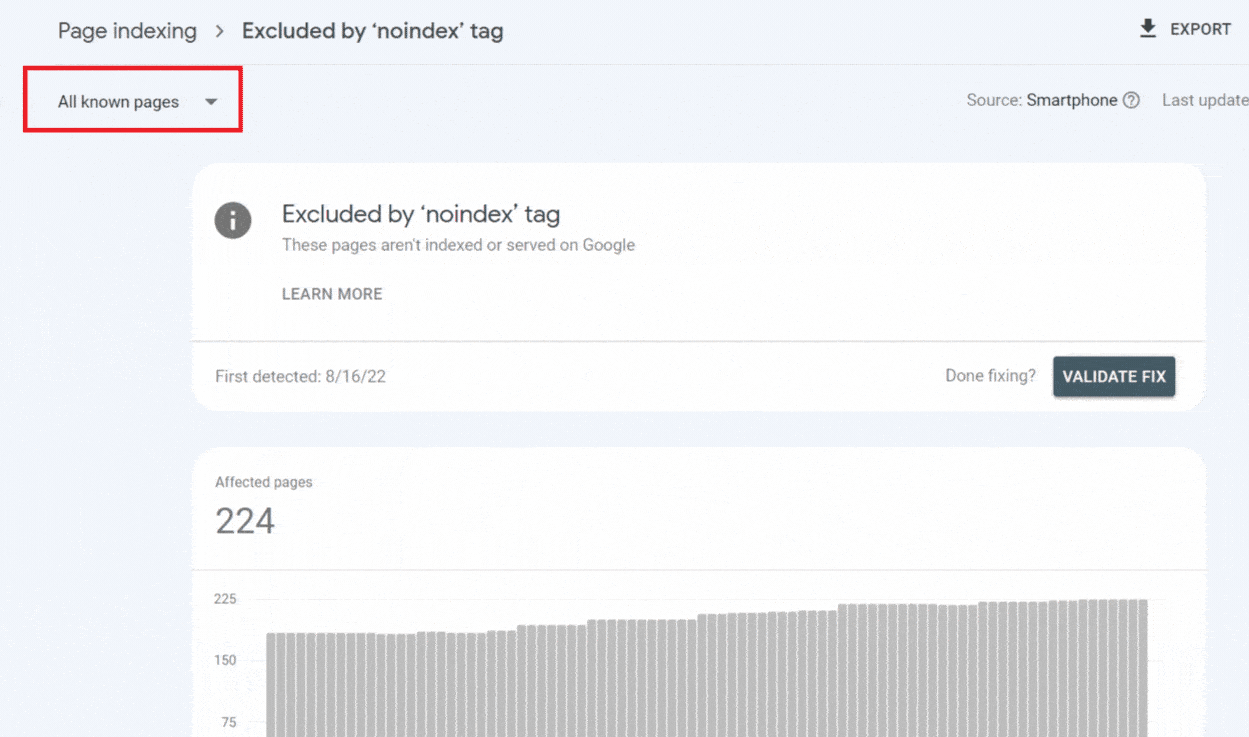
In a perfect scenario, as your sitemaps should include only indexable URLs, there should be no pages on the list of “All submitted pages” for the “Excluded by noindex tag” issue.
But if you found some URLs here and you’re sure these are the valuable URLs you want to have indexed, remove the noindex tag from these pages and keep them in your sitemap.
But remember that even if you didn’t want the submitted URL marked noindex to be indexed, you shouldn’t ignore this issue because it can damage your SEO.
In this case, remove the page from your sitemap. Its status in the Page indexing (Index Coverage) report will remain unchanged, but you will save your crawl budget and help Google understand your purpose.
Here’s what you can do now: Still unsure of dropping us a line? Read how technical SEO services can help you improve your website.NEXT STEPS
Why may “Excluded by noindex tag” be bad for SEO
If you aren’t sure whether your page should be “Excluded by the noindex tag”, the worst thing you can do is not take any action to troubleshoot it. Then, you risk wide-ranging negative effects on your website’s crawling and indexing.
Let’s look at how your website’s SEO may be affected by the following:
Limiting your indexing potential
If you wanted a given URL to rank on Google Search, but it contains the noindex tag, Google won’t index and rank it at all.
The decision on what pages should be indexable can’t be random. It has to be incorporated into an indexing strategy of your website. Without it, you can easily lose track of how Googlebot approaches your URLs and not oversee the potential struggles.
To begin with your strategy, you can use a decision tree I published some time ago via Onely’s official Twitter account.
Wasting your crawl budget
Bear in mind that bots need to crawl your noindexed pages to find the noindex tag in your code.
But if you have many URLs marked with the noindex tag, you need to think if you need bots to find them on your website in the long run. Consider removing your internal linking to the noindexed page to limit bots’ access to it.
Also, when including URLs marked noindex in your sitemap, you’re asking bots to crawl them first. Whether you want these pages to get indexed or not, you’re wasting Google’s resources on crawling URLs that, in any case, can’t get indexed.
As a result, it can contribute to crawl budget issues. Google may spend resources on crawling non-indexable URLs and delay the crawling of your indexable pages.
Go for crawl budget optimization services to improve the crawling of your website. Want to optimize your crawl budget?
Wrapping up
“Excluded by noindex tag” isn’t necessarily bad if you deliberately used the noindex tag to block indexing of some pages.
But remember that failing to act when you want the excluded pages to be indexed may severely harm your website.
The crucial thing is to make a conscious decision about how exactly your indexing strategy should look.
If you’re wondering what pages are worth being indexable and what should be excluded from search, we can help.
Contact us for a thorough indexing SEO audit to maximize your website’s chances of indexing.

Hi! I’m Bartosz, founder and Head of Innovation @ Onely. Thank you for trusting us with your valuable time and I hope that you found the answers to your questions in this blogpost.
In case you are still wondering how to exactly move forward with your organic growth – check out our services page and schedule a free discovery call where we will do all the heavylifting for you.
Hope to talk to you soon!
